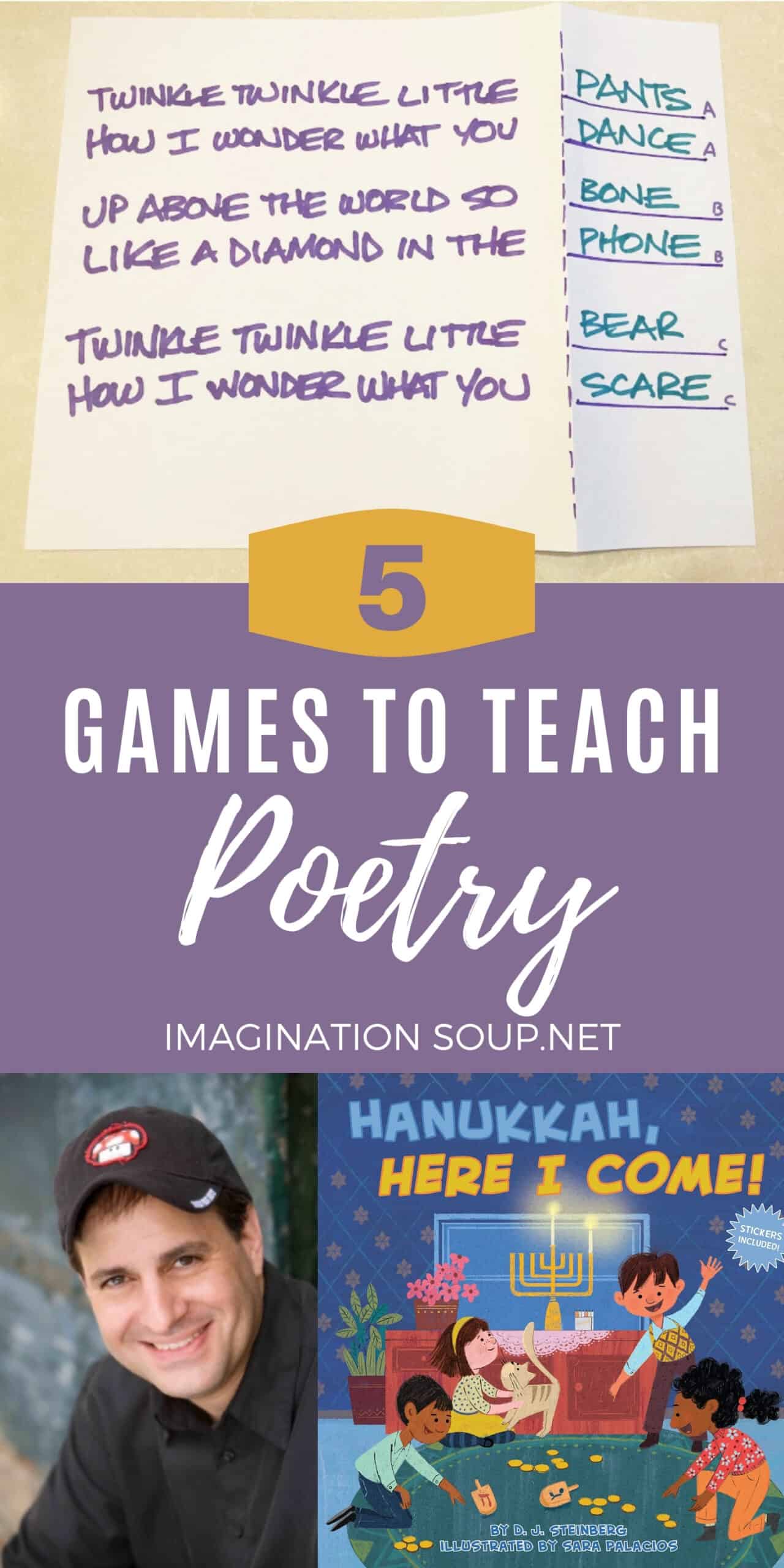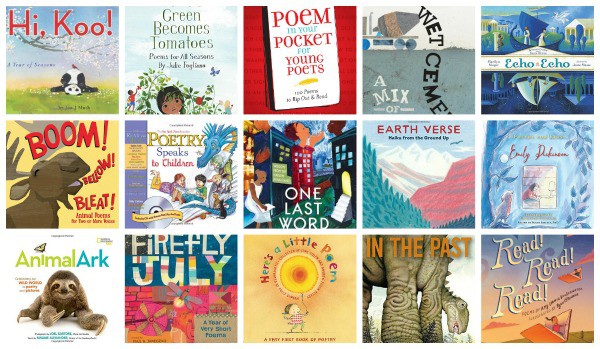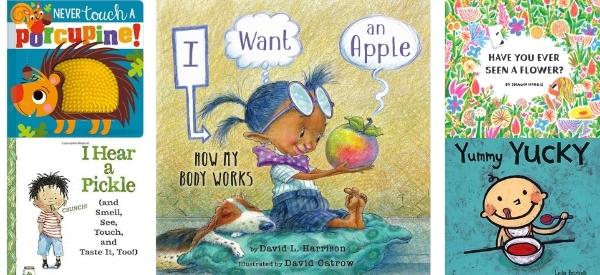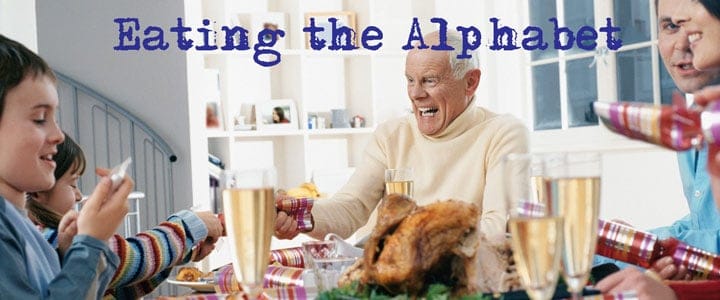Rhyme Time: 5 Games to Teach Poetry
This post may contain affiliate links.
Written by D.J. Steinberg as an exclusive for ImaginationSoup.net
Nursery rhymes have stood the test of time for good reason. I could recite Old King Cole and Peas Porridge Hot by heart long before I could decode all those words from our Mother Goose book. Something about meter and rhyme taps into an innate and playful way our super-computer brains build our language muscles and phonemic fitness. My oldest son would babble nonsense rhymes endlessly in his crib (—he is 24 and doesn’t do that anymore). At bedtime, all of my kids as preschoolers gravitated to books in verse. Much like songs, verse just makes language more fun, memorable, and predictable (in the best possible way).
Many of us move on to more erudite literature as we mature, but not me. I’m hopelessly stuck in children’s verse. I could blame Dr. Seuss, Shel Silverstein, or A. A. Milne, or a mother who had a penchant for poetry, but one way or another, I was destined to become a rhymester myself. Of the 25 kids’ books I’ve published to date, 20 are in rhyme, including my current “Here I Come!” series for Penguin Workshop. These new books, which started with “Kindergarten, Here I Come!” weave a series of humorous poems in each volume around different childhood experiences (new grades at school, holiday celebrations, etc.).


Rhyme is fun to write, but even more fun when I get to read them out loud to an audience. At school visits, I love the opportunity to teach early grades about poetry, especially the kind that uses meter and rhyme.
Over the years, I’ve developed games that I use to teach the principles of rhyme, rhyme scheme and meter. I was inspired by Imagination Soup to share these activities with you, to try at home or in class. If your crew responds anything like the kids I’ve played these with, you’re going to have a blast. (Shoot me an email at david@djsteinberg.com and let me know how they go!) These interactive games are recommended for ages 4-8.
5 Games to Teach Poetry
____________________________
Game 1: THE RHYMING HAT
(A game that introduces rhyme to beginners.)
Setup: Write a list of single-syllable words that the children will know, at least as many as the number of players. Cut the words into strips, fold them, and mix them up in a hat.
To play: Go around the room and have each child close his or her eyes and pick a strip from the Rhyming Hat. Write the word on whiteboard or paper and give the child who picked it the first chance to come up with a rhyming word. If needed, the other children can help (raising hands, of course). Write the rhyme beneath the word that was chosen. Pass the hat until everybody has a turn. We’re just getting warmed up. When the game is over, save that list of rhyming pairs. We are going to use it again!
____________________________
Game 2: CAT-DOG-COW-PIG
(This game takes rhyming to the next level.)
Setup: Make 4 columns on a whiteboard (or sheet of paper). At the top of the columns, write and underline “CAT,” “DOG,” “COW,” and “PIG.” (If you are so inclined, you can doodle the animals by their names, or have one of the kids be your illustrator.)
To Play: Go around the room and ask each child to contribute one rhyme only for any of these 4 animals. Write each valid rhyme down under the name of that animal. Keep going around the room, just one entry at a time, trying to come up with as many words as the children can think of for the animals listed. Keep a running list under each column. When nobody can think of any more rhymes, count up how many rhymes in each column. The animal with the most rhymes is declared the winner! (Optional: to celebrate, everyone in the class has to make the sounds of the winning animal.)
____________________________
Game 3: RIDONCULOUS RHYMES
(This game familiarizes players with the concept of rhyme scheme.)
Setup (see illustration):
- Make a fold down a sheet of posterboard or paper, about a quarter of the way in from the right edge.
- Write out a nursey rhyme on the left part of the sheet, but do not write out the last word of each line. Instead, put a fill-in-the-blank next to each line on the right, folded section.
- This is the part where we introduce “rhyme scheme.” Add a small A, B, or C next to the fill-in-the-blank, to show which lines rhyme with each other. In the “Twinkle Little Star” example shown here, the rhyme scheme is indicated as AABBCC.
- Prepare several poems this same way with different rhyme schemes. “Humpty Dumpty” has a AABB rhyme scheme. “Mary Had a Little Lamb” has an ABCB pattern. “Jack and Jill” has a AABCCB rhyme scheme. By playing the game, the kids will observe how these different patterns work.
- Now, fold the paper over so only the right section is showing. Don’t let the kids see the poem!

To Play:
- Show the players how the letters beside the blanks show which lines need to rhyme with each other. All the A’s need to rhyme, all the B’s need to rhyme and so on.
- Ask for suggestions for each of the pairs of rhymes.
- In cases where there is a lone letter without a matching rhyme (like in ABCB scheme), they get to come up with the single silliest word they can think of!
- Now, unfold the page to reveal the rest of the poem, and read aloud! (Hilarity ensues.)
____________________________
Game 4: CATCH THE BEAT
(This game familiarizes players with an understanding of meter.)
Setup: Collect a number of poems that have different meters. (Anthologies can be good for this, or just earmark some of your faves from different sources.) Note: have at least as many poems as the number of children playing.
To Play: The players sit in a circle on the floor. There is a drum that gets passed around the circle. Eeny-meany-miney-mo picks the first drummer. The player with the drum has to listen as you recite a poem (or section thereof), and tap the drum along to the rhythm of the stresses. (If it’s a short poem, feel free to repeat it in order to keep the meter going.) Once the player gets the groove, you stop reciting the words and say, “Take it away, Hannah!” (or whomever that drummer happens to be). The drummer then keeps tapping out the rhythm of the poem’s meter without any words at all, and everyone else is welcome to clap along.
____________________________
Game 5: I’M A POET & I KNOW IT
(This game uses prompt words to help kids generate their own simple poems.)
Setup: Remember those rhyming pairs from the Rhyming Hat game? You held onto those, right? For kids old enough to write, give them paper and pencil. (For younger players, this can be done as a group discussion rather than individual exercises.)
To play: Tell the players to pick any 2 rhyming words from the list and make up their own “couplet.” You will have to explain that a couplet is a rhyming 2-line poem. Then give an example, like if a rhyming pair is bat and hat, the poem can be:
Oh help, there is a bat
who lives inside my hat!
The players can then volunteer to read their couplets aloud.
For younger children, read each rhyming pair to the group and brainstorm couplets together that use these words!
____________________________
There you have it… 5 fun exercises to start every child on his or her road to being a poet laureate. Or at the very least, give our formative readers a better understanding and appreciation of the things that make up rhyming verse. The best kind of education is the kind that doesn’t feel like education at all, and games like these can be a perfect way to perform such trickery. In truth, sharing these games with you all is just part of my not-so-secret plot to spread the joys of poetry to as many unsuspecting children as possible!
About D.J. Steinberg

D.J. Steinberg is the best-selling author of 25 books including the popular Here I Come! series, published by Grosset & Dunlap/Penguin Random House. His newest books, Christmas, Here I Come! and Hanukkah, Here I Come! are coming out this month, just in time for the holidays. He is also an animation producer and executive, who has worked with companies like Disney and Nickelodeon.
For updates and school visit info, see www.djsteinberg.com
Connect with D.J. on social media at: Facebook, Twitter, and Instagram.

KEEP READING












These are great, really fun, educational, and easy to do ideas that will really help teach rhyming and poetry! I can’t wait to do these with my kids! Thanks for sharing!
Aren’t these amazing!? Such great ideas from D.J.!